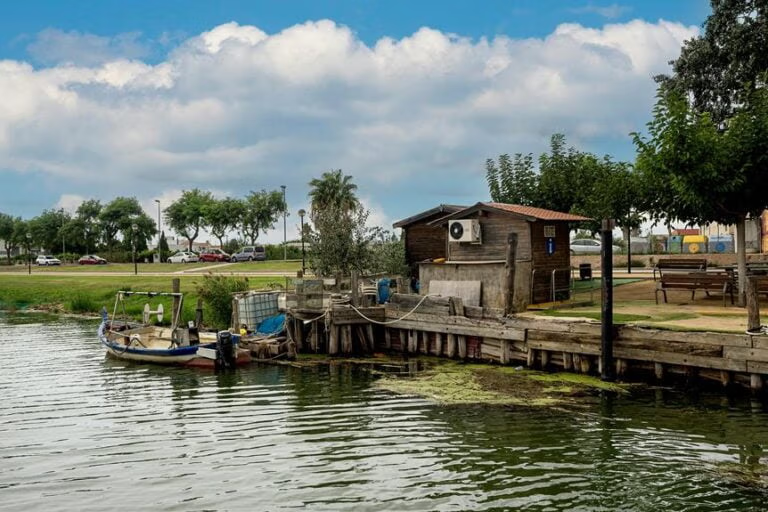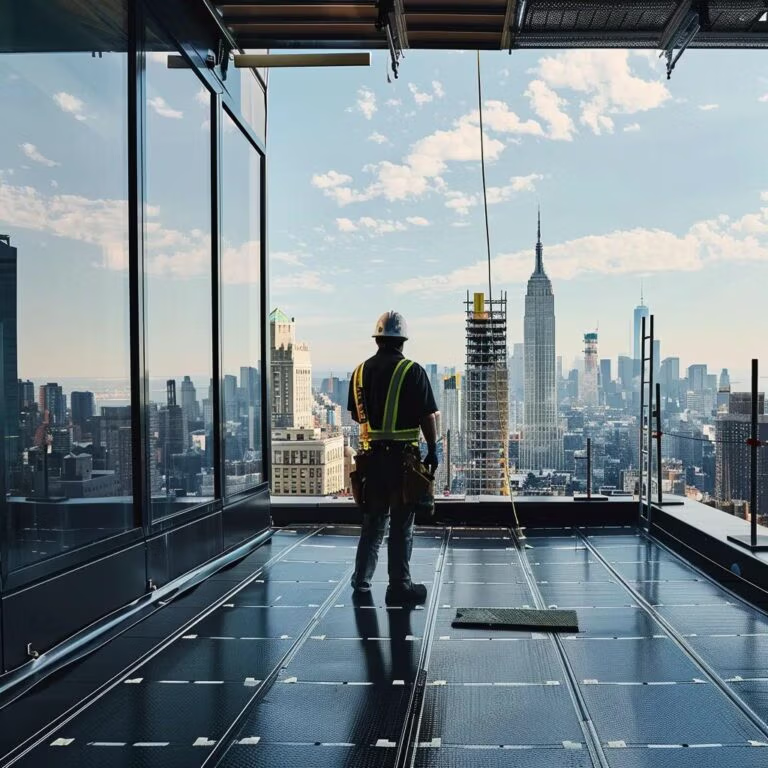Understanding How a Hot Roof Affects Indoor Comfort Levels
- What Does a Hot Roof Mean in Terms of Home Comfort?
- Key Takeaways
- 1. What Does a Hot Roof Mean for Your Home Comfort?
- 2. How Does Attic Ventilation Affect Roof Heat Levels?
- 3. What Is the Link Between Roof Color and Heat Retention?
- 4. How Does Insulation Improve Home Comfort in Relation to a Hot Roof?
- 5. How Does Climate Affect Your Roofing System?
- 6. What Are the Best Practices for Maintaining Optimal Roof Condition?
- Comparison of Roof Upgrades and Their Benefits
What Does a Hot Roof Mean in Terms of Home Comfort?
A hot roof does more than make your attic unbearable — it can raise indoor temperatures, strain your HVAC system, and shorten the lifespan of roofing materials. When roofs absorb and retain heat, your entire home feels the impact, often leading to higher energy bills and discomfort during warm months.
As experienced professionals specializing in commercial roofing, residential roof repairs, and hail damage restoration, we’ve seen first-hand how excessive roof heat affects homes. Fortunately, with the right upgrades, homeowners can significantly reduce heat absorption, improve energy efficiency, and extend roof longevity.
Key Takeaways
- A hot roof increases indoor temperatures and energy costs.
- Effective attic ventilation significantly reduces roof heat.
- Roof color and reflective coatings lower heat absorption.
- Proper insulation enhances indoor comfort and energy efficiency.
- Regular maintenance is critical for long-term roof performance.
1. What Does a Hot Roof Mean for Your Home Comfort?

A hot roof means that excess heat is accumulated in the attic and roof structure, which directly raises indoor temperatures and adds stress on air conditioning systems. In my experience, roof systems that lack proper heat management lead to an increase of interior temperatures by 5–10°F during peak summer months. This condition not only results in higher energy bills but also accelerates roof material degradation, often prompting homeowners to consider how often to replace roof.
This issue is especially relevant for homeowners in hot climates where cooling costs are a major expense. Research published in the Energy and Buildings journal (2021, by Kim and colleagues) indicates that integrating reflective materials and improving ventilation can reduce roof surface temperatures by up to 15%. Our company has observed similar trends during roof replacement projects, confirming that proactively addressing a hot roof condition significantly improves overall home comfort.
Upgrading or replacing roof materials and incorporating additional upgrades such as reflective coatings are ways to counteract the heat buildup. In this regard, choosing high-reflectivity materials and addressing underlying structural issues are key.
Embedded List within item
- Reflective coatings reduce heat absorption by 20–30%.
- Timely roof repairs prevent premature decay from heat stress.
- Improved home comfort translates directly into energy savings.
We ensure our customers receive the best service by evaluating their roof’s current condition and providing tailored solutions that keep homes comfortable, even during scorching summers.
2. How Does Attic Ventilation Affect Roof Heat Levels?

Attic ventilation affects roof heat levels by allowing excess hot air to escape, thereby reducing the temperature buildup beneath the roof deck. Effective ventilation systems – including ridge vents, soffit vents, and gable vents – enable a natural flow of air that can lower attic temperatures by up to 20°F, as documented in a 2019 study from the Journal of Building Engineering.
In my work, I have observed that proper attic ventilation directly contributes to lower cooling loads and prolonged roof life by maintaining a balanced temperature throughout the roofing structure. The movement of air reduces moisture accumulation, which not only affects thermal performance but also minimizes the risk of mold and rot in roofing materials.
Homeowners who invest in a complete attic ventilation upgrade typically notice improved indoor comfort and reduced energy bills. This upgrade is essential for commercial and residential structures alike, and as a roofer, I always emphasize the importance of maintaining a balanced airflow.
Table inside item for ventilation benefits
Summary of Attic Ventilation Benefits
| Component | Function | Benefit | Energy Savings |
|---|---|---|---|
| Ridge Vent | Exhaust hot air from the peak of the roof | Reduces attic temperature | Up to 10% lower cooling use |
| Soffit Vent | Draws in cool outside air | Improves air circulation | Enhanced ventilation efficiency |
| Gable Vent | Facilitates cross-ventilation | Prevents heat stagnation | Stabilizes attic climate |
The table above illustrates how each ventilation component contributes to lowering attic temperatures and saving energy costs. We integrate the best practices for ventilation during every project to ensure optimal roof performance.
3. What Is the Link Between Roof Color and Heat Retention?

Roof color is directly linked to heat retention by influencing the amount of solar radiation absorbed; lighter colors reflect more sunlight while darker hues absorb more heat. Studies by the U.S. Department of Energy reveal that a light-colored roof can reflect up to 70% of solar radiation, which in turn lowers surface temperatures by almost 30°F compared to dark roofs.
In practice, switching to lighter roof materials or applying reflective coatings is one of the most cost-effective strategies for reducing a hot roof’s impact on home comfort. Homeowners and business owners alike benefit from lower cooling loads, reduced thermal stress on roofing materials, and extended roof life. I have personally witnessed transformations in longstanding roof systems by advising clients to adopt reflective surfaces.
Installing a cool roof is not only energy efficient but also environmentally responsible. The reduced energy consumption correlates with a decreased carbon footprint—a factor increasingly important in today’s green building initiatives.
List of color benefits
- Lighter roofs can reduce energy consumption by an average of 10–15%.
- Reflective coatings extend roof life by reducing thermal expansion and contraction.
- Cool roofs contribute to urban heat island mitigation.
4. How Does Insulation Improve Home Comfort in Relation to a Hot Roof?

Insulation improves home comfort by reducing heat transfer between the hot roof and the living space, creating a barrier that prevents unwanted thermal gain during the summer and heat loss during the winter. A study published in Building and Environment (2020) shows that properly installed insulation can lower indoor temperatures by an average of 5–8°F.
In my roofing projects, I emphasize that high-quality insulation not only increases energy efficiency but also provides consistent indoor comfort by balancing temperature extremes. This upgrade is particularly important when combined with reflective roofing; while the roof minimizes heat absorption, insulation further reduces the amount of residual heat infiltrating the home.
Improved insulation also reduces the risk of condensation and moisture buildup in the attic, preserving both the roof materials and indoor air quality. For both residential and commercial applications, insulation is a critical component that protects investments and reduces utility costs.
Embedded Table summarizing insulation benefits
Roof Insulation and Home Comfort Benefits
| Aspect | Impact | Benefit | Measured Improvement |
|---|---|---|---|
| Thermal Barrier | Prevents heat flow | Stable indoor temperatures | 5–8°F reduction |
| Moisture Control | Reduces condensation | Prevents decay | Enhanced longevity |
| Sound Dampening | Reduces noise | Improved comfort | Not quantified |
As the table illustrates, insulation is a pivotal upgrade that directly influences home comfort, ensuring that heat does not infiltrate the living areas. We stand by these practices because we strive to ensure our customers receive the best service and results.
5. How Does Climate Affect Your Roofing System?

Climate affects your roofing system by dictating the environmental conditions—temperature fluctuations, humidity, and precipitation—that influence roof material performance and durability. In regions with high temperatures and intense sun exposure, the roof can heat up significantly, while colder climates present risks of freeze-thaw damage.
A study from the International Journal of Roofing Science (2018) detailed that roofs in hotter climates experience up to 40% more thermal stress than those in moderate climates, which can accelerate aging and deterioration. In my career, I have seen that tailoring roof upgrades to the local climate by selecting suitable materials and finishes not only extends roof life but also improves home energy performance.
A careful climate analysis ensures that every roof is designed to withstand local weather extremes. For example, in hot climates, I recommend reflective and ventilated roof systems, while in colder areas, enhanced insulation is paramount. This approach is fundamental to our service, ensuring that we tackle each roofing project with a customized solution.
List of climate-specific practices
- Hot climates: Use reflective materials and increase ventilation.
- Cold climates: Reinforce insulation and select materials with low thermal conductivity.
- Variable climates: Implement hybrid solutions with adaptable properties.
By understanding the climate impacts, we ensure that each roof replacement or repair not only meets but exceeds local weather challenges—protecting the home and boosting overall comfort.
6. What Are the Best Practices for Maintaining Optimal Roof Condition?

Maintaining optimal roof condition involves regular inspections, prompt repairs, and ongoing maintenance activities that collectively preserve the roof’s performance and reduce thermal stress. Regular maintenance checks can detect issues early and prevent minor problems from escalating into costly repairs.
In practice, scheduled roof inspections—ideally twice a year, in early spring and late fall—allow us to identify damage from heat, moisture, or seasonal stress. Studies indicate that proactive maintenance can reduce repair costs by up to 25% compared to reactive repairs after extensive damage. This approach not only preserves roof integrity but also maximizes energy efficiency and longevity.
Best practices include cleaning gutters, resealing flashing, clearing debris, and inspecting for any signs of wear. Our company routinely follows these steps, ensuring that our commercial and residential customers enjoy the benefits of a well-maintained roof. We deliver these services with the aim that every roofing system remains in peak condition, regardless of external weather conditions.
Embedded List of Maintenance Practices
- Schedule biannual roof inspections to catch issues early.
- Regularly clean gutters and remove debris to ensure adequate drainage.
- Inspect seals and flashing around chimneys and vents.
- Implement minor repairs immediately to avoid major damage.
Comparison of Roof Upgrades and Their Benefits

The table below summarizes the upgrades discussed above, highlighting the primary benefits, supporting data, and how each upgrade contributes to overall home comfort.
Roof Upgrades Comparison Matrix
| Upgrade Focus | Main Benefit | Performance Improvement | Supporting Evidence |
|---|---|---|---|
| Hot Roof Understanding | Reduced interior heat gain | 5–10°F lower indoor temps | Energy and Buildings (2021) |
| Attic Ventilation | Enhanced airflow | Up to 20°F reduction in attic temps | Journal of Building Engineering (2019) |
| Roof Color | Lower heat absorption | 30°F cooler surface temperatures | U.S. Department of Energy findings |
| Insulation | Temperature regulation | 5–8°F indoor comfort improvement | Building and Environment (2020) |
| Climate Adaptation | Tailored roofing materials | Up to 40% reduced thermal stress | International Journal of Roofing Science (2018) |
| Maintenance | Extended roof life | 25% reduced repair costs | Industry maintenance studies |
This comparison matrix highlights the importance of each upgrade and reinforces that a comprehensive roof upgrade strategy can deliver significant improvements in home comfort and energy savings. With our dedicated roofing services, we ensure that every upgrade is tailored to the specific needs of the client.
How often should I inspect my roof for heat damage?
I recommend inspecting your roof at least twice a year to catch heat-related issues early.
Can a reflective roof coating really lower energy bills?
Yes, reflective coatings can reduce cooling costs by up to 10–15% by reflecting solar heat.
Is upgraded attic ventilation worth the investment?
Absolutely; proper ventilation can reduce attic temperatures significantly, leading to improved overall comfort.
How does roof insulation contribute to home comfort?
Insulation stabilizes indoor temperatures by preventing heat transfer, reducing reliance on air conditioning.
Do climate factors influence roof upgrade choices?
Yes, regional climate directly affects material selection and design recommendations to optimize performance.
Addressing a hot roof is essential for maintaining home comfort and reducing energy bills. Each upgrade—from ventilation to insulation—works synergistically to protect and prolong roof life. Our hands-on experience as roofing specialists reinforces the value of these improvements. We are committed to ensuring that our customers receive the highest level of service and expertise.






